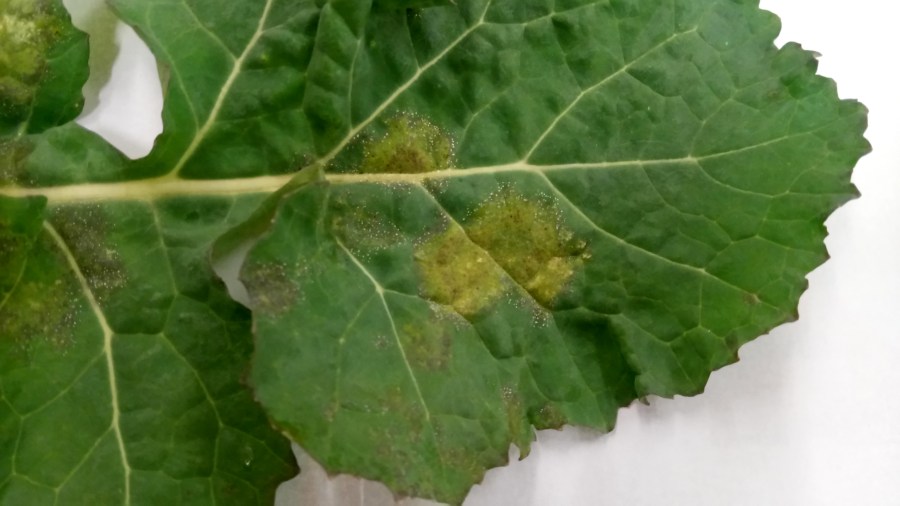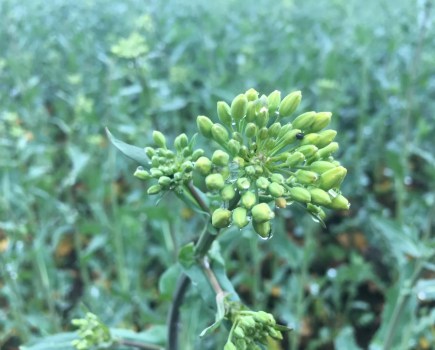[Image: ADAS]The first positive light leaf spot symptoms of the 2019/2020 season have been identified by Bayer’s
SpotCheck initiative. Charlotte Cunningham reports.
Light leaf spot was first identified by SpotCheck on 25 Oct 2019 in Derbyshire and Angus, with samples later positively identified in the Scottish Highlands, Oxfordshire, Yorkshire and Norfolk.
The results suggest that this season there may be a lot of latent infection in the crop, which is expected to further develop if temperatures do not fall in the coming months, says Bayer.
According to Philip Walker, arable plant pathologist at ADAS, the SpotCheck results to date don’t come as a surprise, who cites above average rainfall in September and October being a key driver in light leaf spot infections.
“Moisture and particularly leaf wetness is very important to light leaf spot infection occurring. For infection to occur there needs to be a minimum of 6 hours of leaf wetness, and as those hours of leaf wetness increase, so too does the likelihood of infection.
“Last season initial infections were almost a month later (end of November 2018). Finding samples of light leaf spot so much earlier this season suggests there is a lot of latent infection in the crop, and we will see more and more symptoms developing if temperatures don’t drop in November and December.”
Greater risk
Ella Crawford, Bayer commercial technical manager for Suffolk, adds that the SpotCheck results may be of particular note for earlier drilled crops, which are at greater risk of light leaf spot infection.
“Oilseed rape crops remain a mixed bag, with many areas experiencing extensive flea beetle damage and being written off before incurring further input costs. However, there are a number of more forward, lush crops particularly those drilled early August. These crops will be at higher risk of light leaf spot infection, because the crop is exposed to ascospores for a longer period of time.
“In Suffolk, we’re seeing Phoma lesions on a large proportion of crops, and a small number of reports of LLS symptoms. However, I would encourage growers and agronomists to utilise Bayer’s free SpotCheck service to understand the scale of latent infections and treat crops more effectively as a result.”
Ella is also urging growers to remember that Phoma is more damaging on smaller, more backward crops. “These will need to be treated as soon as the 10% threshold is met. However, as conditions have also been conducive to light leaf spot infection, growers should consider a product active against both Phoma and LLS, such as Proline (prothioconazole) at 0.46 l/ha.”
To benefit from Bayer’s free SpotCheck initiative visit: www.cropscience.bayer.co.uk/spotcheck




